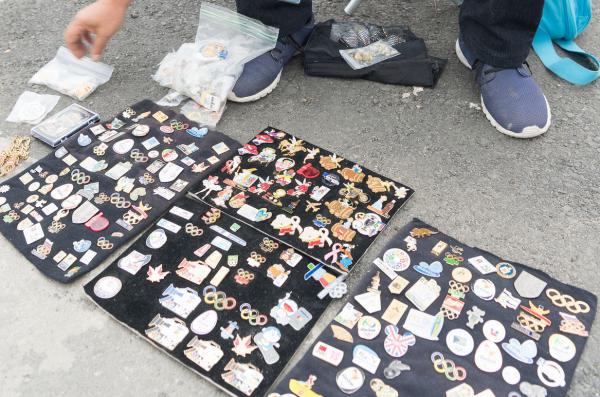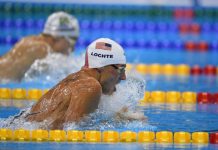
RIO DE JANEIRO, Aug. 12 (UPI) — The competition in Rio de Janeiro is fierce, sometimes mentally taxing, and often the winners are determined by who has the best timing.
But these games aren’t athletic — they’re aesthetic. It’s pin trading.
As the world’s greatest athletes settle victories on the field, in the arenas and in the water, attendees of the Games of the XXXI Summer Olympiad are going after their own medals in the form of small, tin souvenirs of the games.
Many are often surprised to learn just how popular pin trading is at every Olympics. Fans, relatives, media members, Olympic officials and even athletes really get into it. The pins are made and distributed by various companies and Olympic sponsors — and the biggest victories are won in finding the rarest ones.
“It’s the currency of the Games,” collector Dan Baker said. “It’s more important than money. In fact, you can get in some places with a pin where you probably couldn’t get in if you handed them a $20 bill.”
In fact, if you think pins didn’t exist yet at the very first Olympic Games in Greece, you would be wrong. As it turns out, the first ones (although there were only three) debuted when the modern Olympics did in 1896.
The present craze of pin trading, though, dates back to the 1980s. Some say it’s now the most popular spectator sport at the Olympics, summer or winter.
“It gets addictive,” Baker said. “It’s kind of like that Pokémon [Go] game. When you get a new one, you get excited, and that gets you motivated to find the next one.”
There are typically a few pins at each Olympic games that are the most sought after.
At the 1984 Summer Olympics in Los Angeles, one of the most popular pins was one from Coca-Cola featuring that games’ mascot, Sam the Eagle. In Calgary in 1988, it was a pin set from oil company Royal Dutch Shell. In Torino in 2006, it was a Coca-Cola puzzle pin set. And in Salt Lake City in 2002, it was a green Jell-O pin.
“I try to trade pins with the cute boys if I can find them, to be honest,” gold medal gymnast Aly Raisman, 22, said last week. “I just kind of look in the cafeteria. Even Mihai and Laurent, they laugh at me, but they’re like, ‘If it keeps you a little bit distracted, that’s good.’ So a little distraction is OK.”
The “Final Five” American gymnast and women’s all-around silver medalist even posted a photograph to her Instagram account that showed her wearing a string of pins, like pearls, around her neck with the caption, “Pin trading like its ma day job.”






